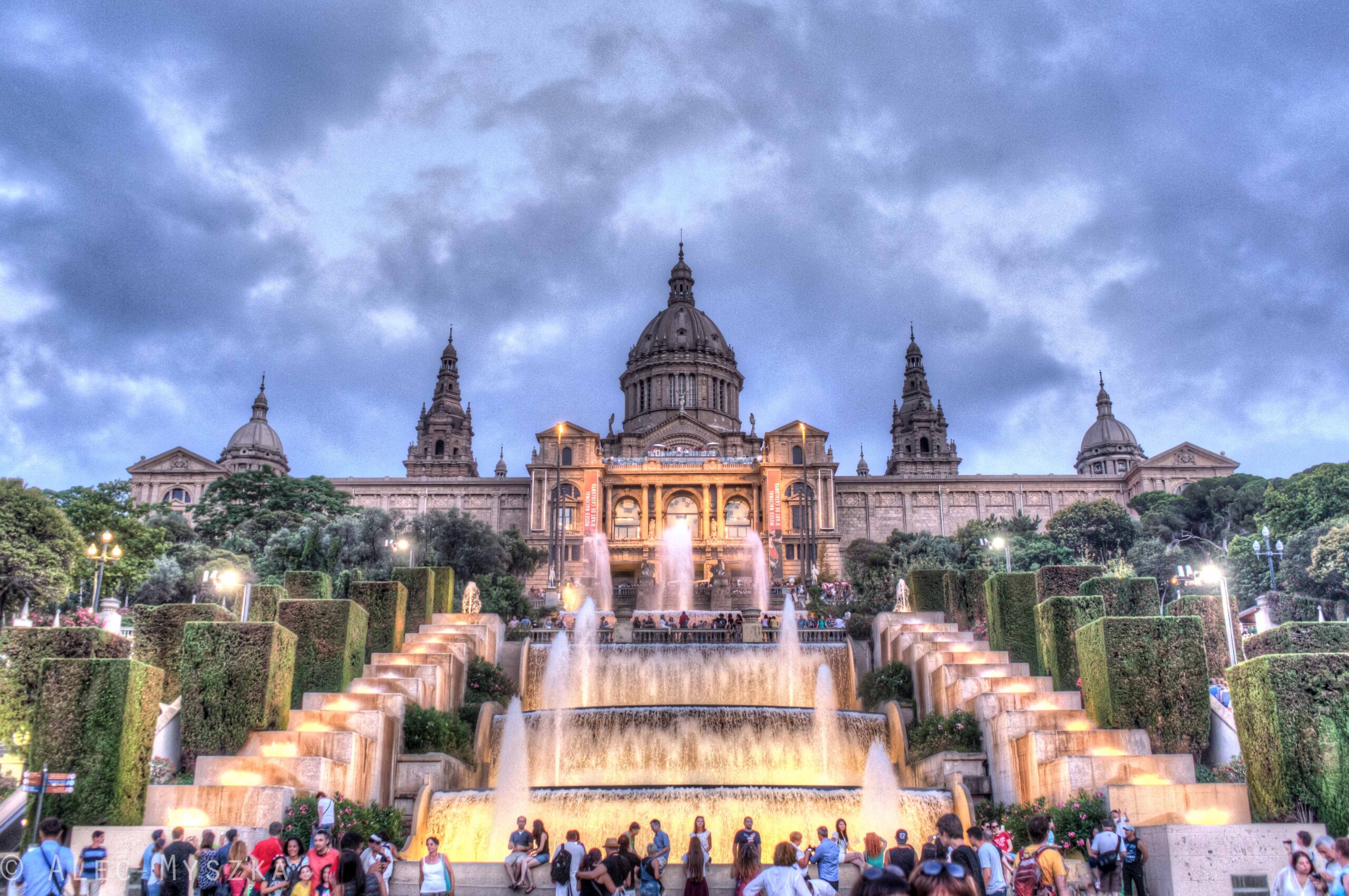Food
Food Categories, unlike tags, can have a hierarchy. You might have a Jazz category.
Search
Food Categories, unlike tags, can have a hierarchy. You might have a Jazz category.
Review Categories, unlike tags, can have a hierarchy. You might have a Jazz category.
Guides Categories, unlike tags, can have a hierarchy. You might have a Jazz category.
Travel Categories, unlike tags, can have a hierarchy. You might have a Jazz category.
![]() By Quppy
By Quppy
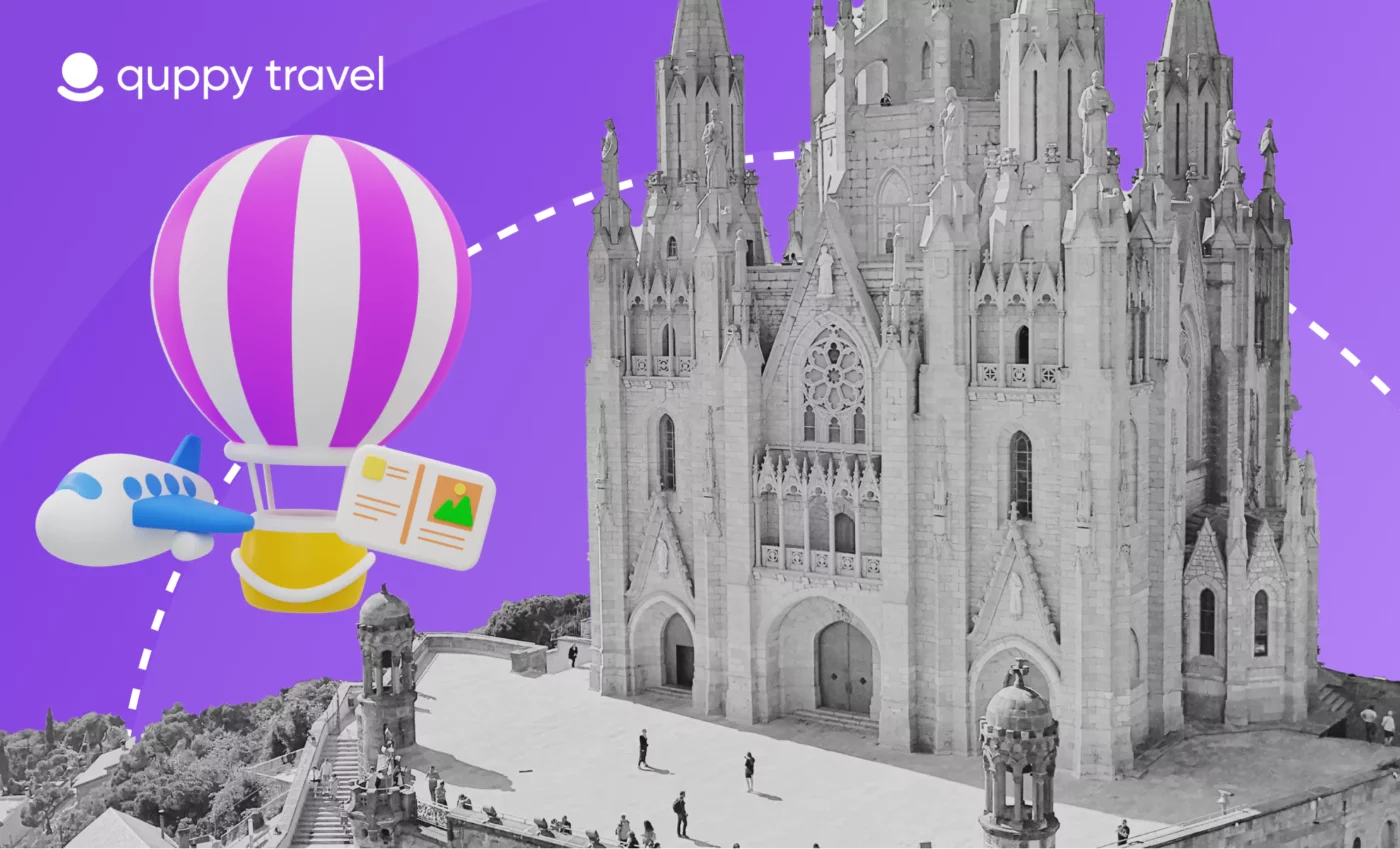
Barcelona, the Catalan capital, is one of the top visited cities not only in Spain but in Europe. Being a true touristic capital, Barcelona is the place satisfying all tastes without exception. Architecture, art, history, cuisine, politics, and even sports. The Quppy Team has chosen the top places to visit in Barcelona and get to love this multilateral land of discoveries from the first sight.
A Gaudí masterpiece and a prime example of Catalan modernism, the Sagrada Familia is Barcelona’s most popular attraction. This large basilica impresses not only with its bizarre forms, but also with the fact that it is still under construction.
The first stone of the Sagrada Familia, a church that occupies an entire block in Ensancha, was laid in 1882. The construction began a year later under the direction of the architect Francisco de Paula del Villar y Lozano, who designed the neo-Gothic building style. Due to some disagreements with the project’s promoter, the bookseller Josep María Bocabella, and the architect who advised him, Joan Martorell, Francisco de Paula abandoned the project shortly after it began.
It was then that Gaudí, a 31-year-old architect who worked as an assistant to Francisco de Paula and Joan Martorell, took on the project. He devoted the rest of his life to this, at first in parallel with other works, but in the last years of his life in an exceptional way: given that Gaudí worked from sketches and made many of his decisions on the go as the work progressed, his presence at the construction site was indispensable.
As soon as he was put in charge, Gaudí designed a completely different building (except for the already built crypt), in which the most important elements are 18 high towers of a parabolic profile. When the building is completed, it will have four towers above each of the three façades (for a total of twelve towers representing the apostles), two large central domed towers dedicated to Jesus and the Virgin, and four other towers (evangelists) surrounding them.
During Gaudí’s lifetime, only the Nativity façade was completed. The architect, knowing that the construction would take several decades, decided to leave a series of models and sketches so that future generations could continue with the original plan. However, during the Civil War, a fire destroyed the crypt Gaudí used as his workshop and destroyed much of the material. After the fire, some fragments of the models were restored, and with the help of some of their photographs, new models were created with which to continue work.
Being the true symbol of both Barcelona and the whole Catalan land, Sagrada Familia marks generations of artists and masters contributing to its creation. The project is finally meant to be finished by 2026 with the third portal conceived by contemporary architects giving homage to the initial project by Antonio Gaudi and reworking his style in accordance with contemporary trends.
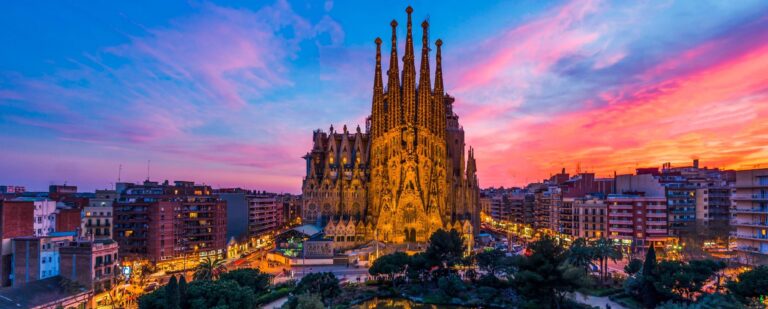
Park Güell offers the perfect environment to enjoy modernist architecture and a pleasant stroll through the park at the same time. Designed by Gaudí under the auspices of the entrepreneur Eusebi Güell, it was originally intended for a residential complex of the Barcelona bourgeoisie.
Amid urban growth and the construction of Barcelona under the Cerda Plan, Güell wanted to create a British-style residential park. He decided to build a park on Montaña Pelada, a hill with unsurpassed views of the sea and the plain. The space was divided into 60 sections, paths, stairs, and passages were built. Strict building rules were established: buildings should not occupy more than one-sixth of each lot, they should not be very high, and they should not block the views and light of neighbors.
Construction began in 1900, and in addition to paths and walkways, a large square with porticoes, pavilions at the entrance, an external fence and a main staircase were built. However, the project was abandoned in 1914 due to a lack of buyers. During Güell’s lifetime, the park, although still his private property, was used for social occasions while after his death, the municipality bought it out to convert it into a public park.
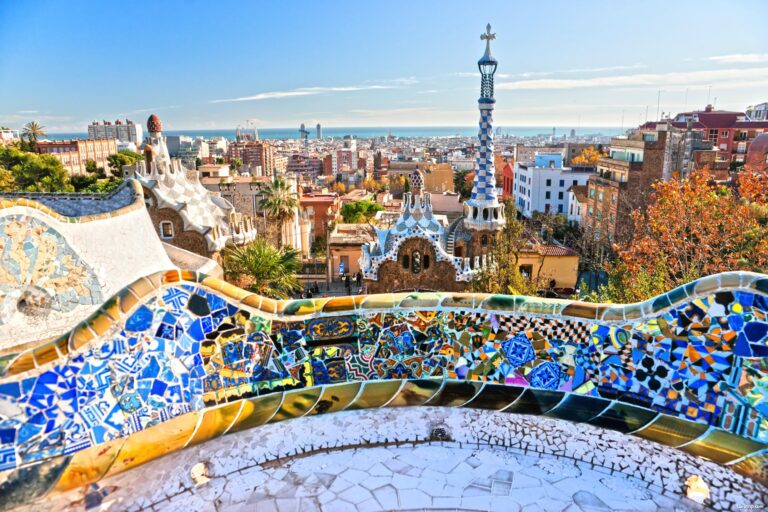
Casa Mila, popularly known as “La Pedrera” (“The Quarry”) because of its quarry-like stone façade, is one of Gaudí’s most famous buildings.
It was commissioned in 1906 by businessman Pere Mila y Camps and his wife Roser Segimon y Artels. Their idea was to build a private house for themselves and at the same time have several apartments for rent in Barcelona’s fastest growing urban area at the time, the Ensanche. The house was designed as two independent blocks with separate entrances with communicating courtyards. An innovative construction method based on the use of columns created wide open spaces and numerous openings on the façade.
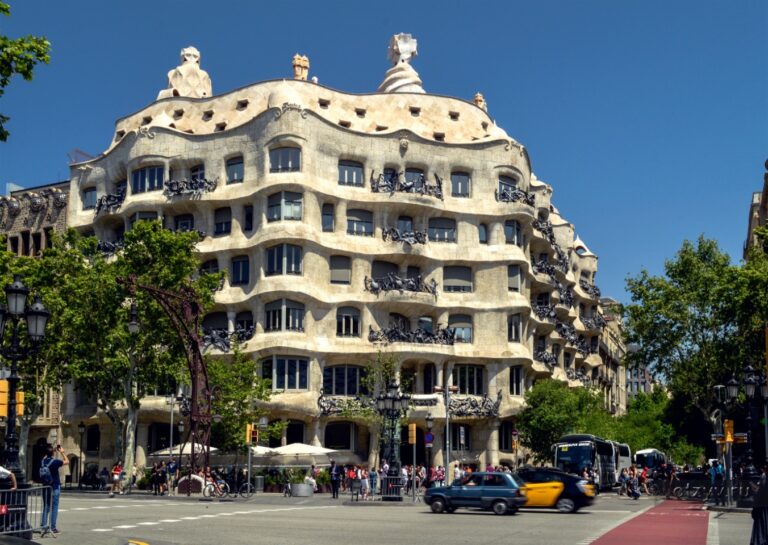
Of all Gaudí’s works, the House Batlló is perhaps the most whimsical and impresses with its play of shapes and colors. Despite the appearance, the house was not built from scratch: it is a reconstruction of a former mansion that stood at Passeig de Gràcia, 43.
The mansion, built in 1877, was bought in 1903 by Josep Batlló, a big businessman in the textile industry. Wishing to have a home unlike any other, he commissioned Gaudí to completely renovate the mansion. After a thorough renovation of the building between 1904 and 1906, the result is a house filled with bright colors and organic shapes. The roof looks like the back of a dragon, covered with scales, which, together with the cross on top of the tower, seems to allude to the legend of St. George, the saint patron of Barcelona.
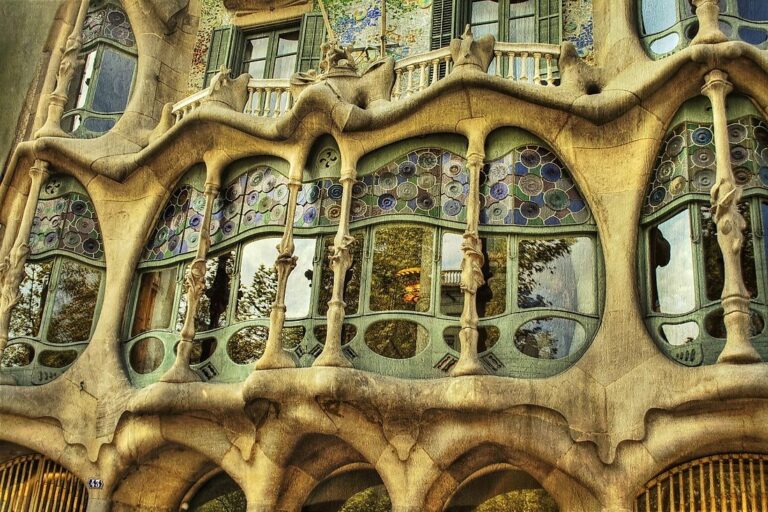
Cathedral de la Santa Creu y de Santa Eulalia (Cathedral of the Holy Cross and Saint Eulalia) is a Gothic church built between the end of the 13th century and the middle of the 15th century, except for the façade, which was unfinished in time, built at the end of the 19th century.
The Cathedral building has three naves, with a transept, ambulatory and side chapels. Like other churches in the city, it was built in the Catalan Gothic style and features open and spacious interiors. There is also a monastery with a 19th century interior garden that creates a special atmosphere. Other attractions are the crypt, the choir, the sacristy, the royal tombs and the organ.
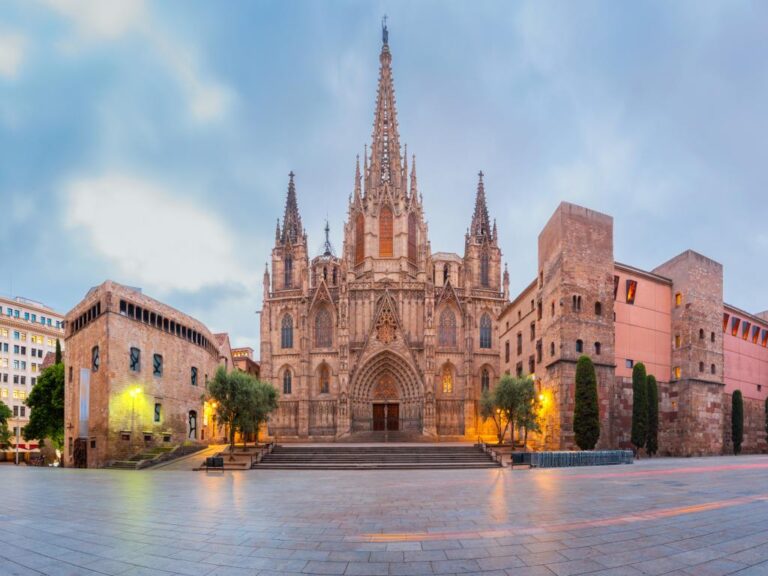
The Picasso Museum, opened to the public in 1963, presenting the early works of the Spanish artist, which show not only his evolution at the beginning of his career, but also his connections with the city. The 4,249 works included in the collection make this world-class museum a must for any visitor to Barcelona. This particular Picasso Museum own not only classical and student works of Picasso, but also his precious portraits of the painter’s father, the first male model of Picasso. Two spaces are dedicated to Picasso reworking masterpieces of Velazques, his special rethinking of classical shapes, structures and compositions together with national historical pictural aesthetics.
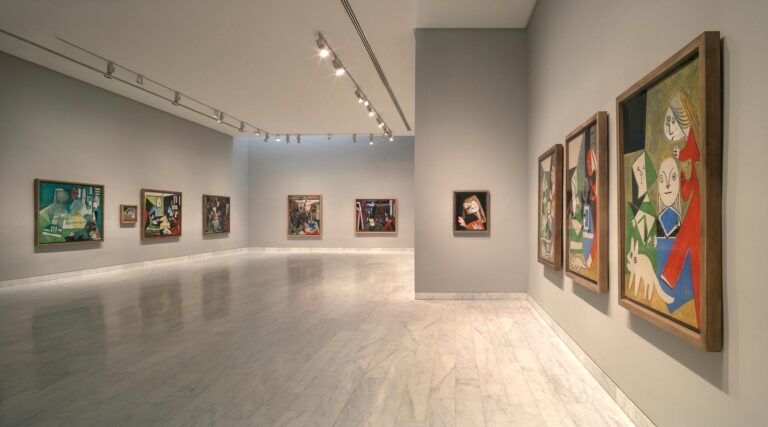
The National Art Museum of Catalonia is one of the most important art museums of the whole Catalan region. Situated atop the hill of Montjuic, in a building built for the 1929 International Exhibition, it contains extensive collections spanning the period from the Romanesque to the 20th century. However, the Romanesque collection is the most relevant part, not only because of the quantity and quality of the exhibits, yet because of the way they are arranged. Don’t forget to take a pleasant walk across the museum area and taking a view on the whole city from this picturesque hill.
